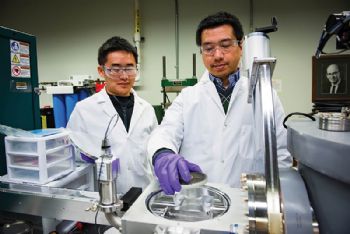
Researchers at Purdue University in West Lafayette (Indiana)(
www.purdue.edu) claim to have developed a way of creating a super-strong aluminium alloy that rivals the strength of stainless steel.
Xinghang Zhang, a professor in the university’s School of Materials Engineering, said: “Most lightweight aluminium alloys are soft and have inherently low mechanical strength, which hinders their more-widespread industrial application.
"However, high-strength lightweight aluminium alloys with a strength comparable to stainless steels would revolutionise the automotive and aerospace industries.”
The findings of the new research, which shows how to alter the microstructure of aluminium to impart greater strength and ductility, have been detailed in two new research papers.
The work was led by a team of researchers that included post-doctoral research associate Sichuang Xue and doctoral student Qiang Li.
The most recent paper was published on-line on 22 January in the journal Advanced Materials. The earlier paper was published in November in the journal Nature Communications.
The new high-strength aluminium is made by introducing what the researchers call “stacking faults” or distortions in the crystal structure.
While these are easy to produce in metals such as copper and silver, they are difficult to introduce in aluminium because of its high “stacking-fault energy”.
A metal’s crystal lattice is made up of a repeating sequence of atomic layers. If one layer is missing, there is said to be a stacking fault.
Meanwhile, so-called “twin boundaries” consisting of two layers of stacking faults can form. Professor Zhang said one type of stacking fault, called a 9R phase, is particularly promising.
“Researchers have learned how to readily achieve this 9R phase and ‘nano-twins’ in aluminium, and how to ‘fabricate’ aluminium alloys that are comparable to — or even stronger than — stainless steel.
“There is a lot of commercial potential in this finding.”